Return to Businesses 2 (the Hitching Post)
...the dirt trail that ran through the middle of Darr's Town served as a thoroughfare for drovers delivering livestock to the slaughterhouses of Cincinnati.
Quickly recognizing that the weary herdsmen would welcome rest and relaxation, local entrepreneures opened their houses as places of business - offering sleeping accommodations, food - and alcohol.

The following is a summary of the info that appears in the 1882 publication titled "A History and Biographical Cyclopedia of Butler County, Ohio."
Abram Darr built a frame house, where Zimmerman now keeps, in 1817, and began the tavern-keeping business. He continued for ten or twelve years. In 1832, he opened a stillhouse, two hundred yards east of where Hiram Darr now lives.
James Anderson came from Pennsylvania to Darrtown in 1817; built the house now occupied by John Graw, and close-by opened a stillhouse, in 1820.
Half-way between Lane's mill and Darrtown, Thomas Cooch built, in 1818, an overshot saw-mill. Thomas Cooch, Jr., with his father, also had a large distillery. All three of these establishments continued up to 1835, when the mills stopped. The stillhouse was carried on for five years longer.
Stephen Kendall came to Darrtown in 1825, built a tavern in the lower end of town, and continued until 1844
Aaron Chamberlain, rented a store-room in 1826, and began to accommodate the public. His store stood on the east side of the street in the middle of the village. He afterward opened a tavern in the store building, continuing for six years.
William Kirkpatrick kept a tavern in Darrtown, in 1845, in the house now occupied by his son Samuel as a tavern and saloon.
Pearson Stout had a stillhouse in 1840, on the farm now occupied by Ebenezer Brown, one mile north of Darrtown.
A public push for temperance — a limitation of alcohol consumption or a total abstinence from alcohol — began as early as 1789, with the founding of the first American temperance society - which was followed by the American Temperance Society, the Women’s Christian Temperance Union and the Anti-Saloon League.
By the early 20th century, public opinion in America turned against heavy alcohol consumption. In 1920, the US government mandated the ban of alcohol manufacturing, sales and consumption with the Eighteenth Amendment to the Constitution and the era of national Prohibition officially began.
Related articles:
"Alcohol was an integral part of American culture from the time the first colonies were established. Alcohol was freely available to people of all ages in Colonial times. It wasn’t uncommon for men, women and children to have beer or ale with every meal."
Societal pressures
Government constraint
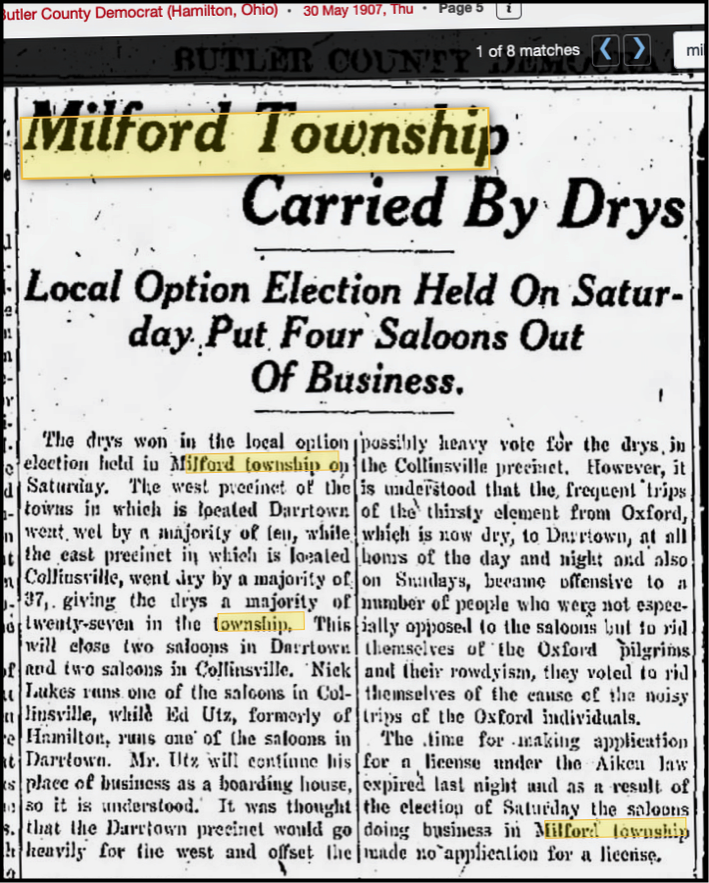
Those who opposed the sale and/or consumption of alcohol were called "Drys."
Conversely, those who favored alcohol were called "Wets."
At this time (Feb. 2021), the name and location of the Darrtown saloon run by Mr. Ed Lutz is unknown.
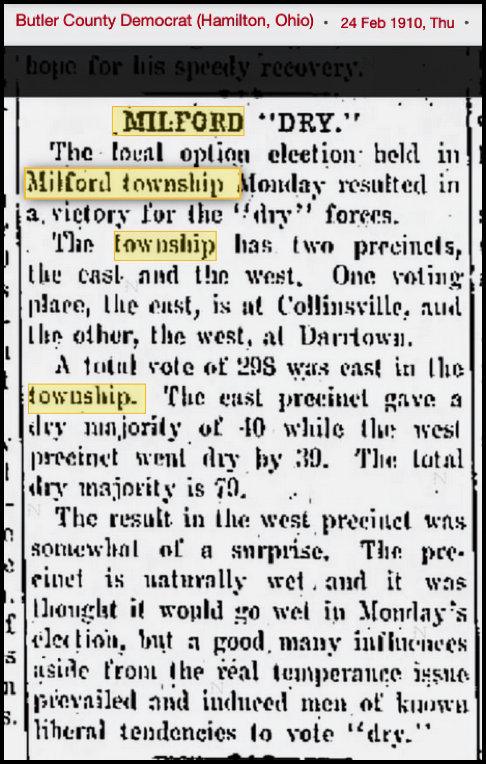
In 1910, only men voted on this issue, as the right for women to vote was not established until 1920, when the 19th Amendment to the U.S. Constitution was ratified.
The vote was split between the eastern and the western parts of Milford township.
Two amendments to the U.S. Constitution were ratified during the first year of the decade in U.S. history known as the "Roaring Twenties."
The US government mandated the ban of alcohol manufacturing, sales and consumption with the 18th Amendment to the Constitution in 1920 and the era of national Prohibition officially began.
On August 18, 1920, women in the U.S. gained the right to vote, when Tennessee became the 36th state to ratify the 19th amendment, thus obtaining the agreement of three-fourths of the states. Ratification occurred on August 26, 1920.
The laws of Prohibition were difficult to enforce, and the black market for liquor fed the growth of organized crime. By 1925, historians estimate that there were as many as 100,000 speakeasies in New York City. The effort to ban alcohol throughout the United States ultimately failed.
During the "roaring twenties," the U.S. was "dry" in principle; but, NOT IN PRACTICE, as the liquor business found ways to survive.
The advancement of women's rights in the United States coincided with the campaign to prohibit alcohol. See: American women and prohibition.
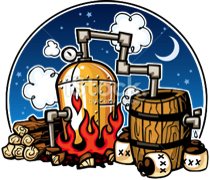
The Eighteenth Amendment was repealed by the Twenty-first Amendment to the Constitution and Prohibition came to an end.
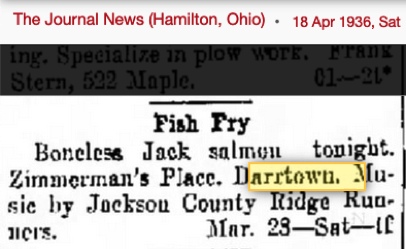
We do have the following newspaper clippings which tell of events related to several Darrtown taverns in 1936.
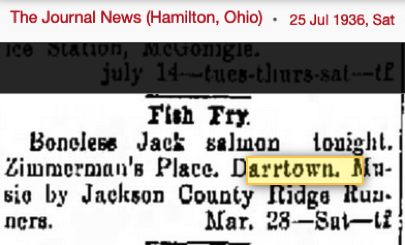
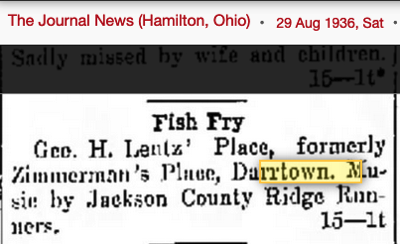

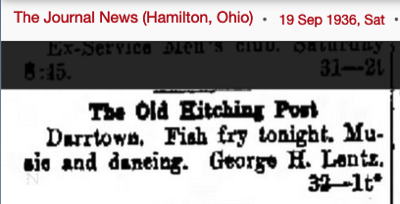
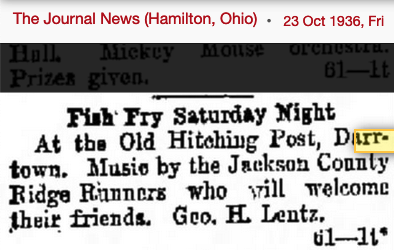
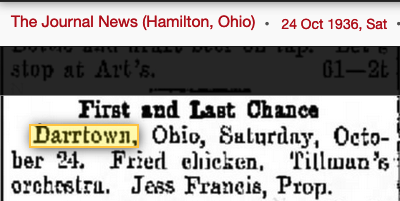
If and when more tavern records are found or donated, they will be added here.
The following is a summary of the info that appears on this website's Hitching Post page.
Distilling became an important industry in the vicinity. Whisky, derived from corn grown locally, became legal tender in the area and a most popular medium of exchange.
Abram F. Darr opened the Hitching Post, Darrtown's first tavern, in 1817. Abram Darr opened his own distillery in 1832.
James Bradberry owned a log stillhouse as early as 1817.
Mitchell Marshall conducted a 15-barrel establishment from 1845 to 1852.
Aaron Chamberlain, Stephan Kendall, and William Kirkpatrick kept taverns here in later years.
Quotation from the "Alcohol in the US" article below.
Website Directory
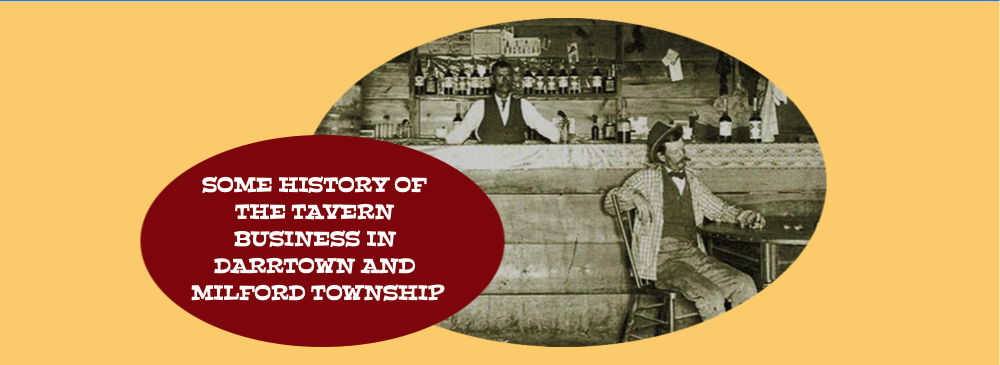

Return to Businesses 2 (the Hitching Post)